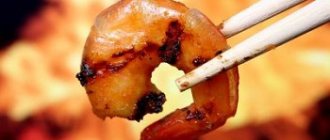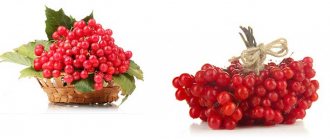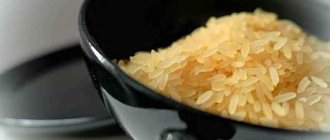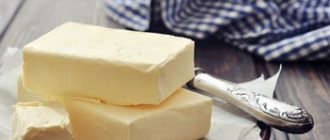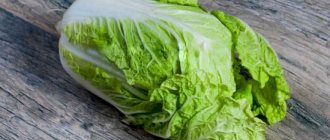The pear itself is a tasty, juicy and valuable fruit. Few people know that it has a beneficial effect on the heart, rejuvenates the skin, is a powerful immunomodulator and has many benefits for humans.
The abundance of fruits in summer is always pleasing, but in winter there is always a shortage of healthy homemade pears. To preserve the harvest, people dry and store them. Moreover, if stored correctly, nothing will happen to the fruits, so you can please yourself with pears, jam, compote, etc. at any time.
Composition and calorie content
Drying the fruit at a moderate temperature preserves all the vitamins and beneficial properties in the pear, which are sufficient in any variety. Therefore, many people who prefer to regularly consume dried fruits enjoy the taste and strengthen their body at the same time.
Compound:
- calories – 249;
- proteins – 2.3 g;
- fats – 0.6 g;
- carbohydrates – 62.6 g;
- dietary fiber – 6 g;
- water – 24 g.
Dried pear is rich in microelements, phytoncides, flavonoids, sugars, fiber, iodine, organic acids and enzymes. The chemical composition contains many vitamins, including provitamin A, C, group B, K, P, PP. The pear contains the most potassium, calcium, magnesium, phosphorus, iron, manganese and copper.
A pear may seem sweeter than an apple, but it actually contains even less sugar. The dried fruit is included in many diets due to its low energy value. It is low in protein, but quite high in carbohydrates.
However, it should be remembered that 100 g of product contains 12% of the daily calorie intake, so this should be taken into account by diabetics and people watching their figure when planning their diet.
Dried pears: benefits and harms
This fruit enriches the human body with various substances: vitamins, microelements and others.
The main value of this product is the content of dietary fiber. In addition, in terms of the amount of folic acid, pear surpasses black currants. And this is an indicator! After all, vitamin B9 is responsible for a person’s good mood, since it is directly involved in the production of happiness hormones. Therefore, this fruit has a refreshing and invigorating effect on the body.
Folic acid also supports the cardiovascular and immune systems, supplies carbon for hemoglobin synthesis, and influences the development and growth of all body tissues.
In addition, dried pears have low energy value. Their benefits are excessively great, especially for people on a diet.
Harm to the above fruit is observed only if there is an individual intolerance to the product. Experts also recommend consuming a limited amount of dried pears for people with diseases such as obesity and diabetes.
Beneficial properties of dried pear
The product not only has a pleasant taste, but is also very healthy. Dried pears are relatively low in calories and high in carbohydrates, which provide energy to the body. There is little sugar here, but the fruit remains naturally sweet. Therefore, many doctors and nutritionists advise eating both fresh and dried pears.
Note!
If dried fruits are dried correctly, then the set of minerals and vitamins is preserved.
100 g of dried pear contains 37% of the daily value of copper, potassium (35%), magnesium (16%), manganese (16%), vitamin K (17%), phosphorus (11%), calcium (10%), iron (10%), vitamin C (9%). Accordingly, including the product in the daily diet will compensate for the lack of nutrients.
Beneficial features:
- It is believed that dried fruits act as a diuretic and disinfectant, normalize many functions and treat the pancreas. The dried fruit helps cleanse the body of heavy metals and removes toxins.
- Usually, a compote is made from the product, which contains tannin, which is useful for intestinal disorders (binding effect for diarrhea), and the antibacterial properties of the drink help in the treatment of colds and sore throats.
- The abundance of potassium makes dried fruits an assistant in normalizing the functioning of the cardiovascular system, strengthening capillaries and blood composition.
- If you feel quickly tired, lose your appetite and lose your mood, you should include dried pears in your diet. They are also useful for arrhythmia and regular dizziness. The point is the high iron content, the lack of which causes the problems described above. For the same reason, pear helps with poor tissue healing. There is even a folk recipe for people to use the product if they often have cracks in the corners of their mouth.
- B vitamins help strengthen and restore muscles, normalize the functioning of the nervous system, as a result of which a person’s general mood improves. Bones are also strengthened due to the calcium content in pears. B vitamins are also good for hair, improve its growth and condition.
- There is a large amount of vitamin C and folic acid. The vitamin strengthens the immune system, protects the body from viruses, has a beneficial effect on the synthesis of certain hormones, is generally a powerful antioxidant, and improves the functions of the thyroid and pancreas. Vitamin C also slows down aging and removes toxins in alcoholics.
- Since the product removes toxins, dried fruit compote helps with hangovers. It is also believed that eating pears daily improves performance.
We recommend reading:
what are the benefits of dried apples
Read
Dried pears in medicine
Dried pear is used primarily in folk medicine. Namely:
- at high temperature;
- as a diuretic;
- as a general tonic;
- against cough
The product is used for inflammatory processes in the kidneys and bladder, to restore the acidity of gastric juice, and to suppress microbes in the intestines. And there are actually no special recipes. You just need to regularly consume the dried fruits themselves or a rich compote made from them.
People also use dried pear to treat:
- insomnia;
- obesity;
- colds and coughs;
- high cholesterol;
- fatigue;
- digestive disorders;
- depression;
- heart problems;
- nervous system disorders;
- headache.
Harm and contraindications
There are undoubtedly many benefits from dried pears, but there are also harms. Although there are not so many calories, they are a priori, so you should not abuse them by eating a lot of dried fruits every day. People with diabetes need to think especially about this.
High fiber foods should not be consumed by people with stomach ulcers. And dried pears have enough fiber.
In general, dried fruits are hypoallergenic, but individual intolerance may occur. More often, an allergy to dried pear is found in people with allergies to birch and alder. But there are very few such people.
How to store dried pears
The safety of both the product itself and its beneficial properties depends on proper storage of dried fruits. The finished slices are stored in a closed, airtight container, be it a glass or a tin jar. The main thing is that it closes tightly. You can also use plastic bags with a zipper.
Pears should be stored cool and preferably in the dark. A room with ventilation, low humidity and a temperature within +10 degrees is ideal. Dried fruits perfectly absorb foreign odors, so there should be no particularly aromatic foods (fish, spices, etc.) nearby. Containers should not be placed on the floor.
Unforeseen situations cannot be excluded. And if insects somehow got inside the container, then you can try to correct the situation. It may turn out that pests noticed in time did not have time to spoil the product. You need to sort through the pears, throw out the spoiled slices, put the rest back on a baking sheet and dry in the oven for half an hour at a temperature of 60 degrees. Another enemy is mold. If dried fruits are infected with fungus, it is better to throw everything away.
In a suitable place, under optimal conditions and in an airtight container, dried fruits can be stored for up to a year. If they are just lying in the apartment, then due to the high temperature and humidity, bacteria will multiply quickly, and after 2-4 weeks the pear will become covered with mold.
Video:
how to store dried fruit Expand
How to choose the right dried pears?
Overdried and soft fruits should not be purchased. High-quality dried pears have the following features:
- moderately dry;
- elastic;
- opaque;
- wrinkled;
- matte.
If the purchased fruit has a bitter taste, this is a sign of incorrect production technology. Therefore, it is better to buy goods not in bulk, but in branded packaging, which indicates the expiration date and the number of the corresponding GOST.
It is recommended to store dried fruits at a maximum temperature of 10 degrees Celsius. It is also important that they are kept in a dark and damp environment. If you provide normal storage conditions for dried pears, then their shelf life can be up to two years.
If these fruits were kept indoors at normal room temperature, then they should be consumed within 12 months.
Dried pears are a tasty and healthy delicacy. The process of drying these fruits is simple and can be done by any housewife.
How to dry pears at home
Anyone can successfully make dried pear fruits at home. Usually they use slightly unripe fruits with dense pulp, but not very juicy. It is better not to use varieties with a lot of seeds that are “astringent” in the mouth. Sweet summer varieties are well suited: Ilyinka, Forest Beauty, Fragrant, Limonka, Zaporozhskaya.
Medium-sized fruits are collected, washed and boiled. Everyone does drying in their own way, but many grind the pear, first cutting it into 4 parts to remove the seeds, and then into slices. The product is then soaked in wine vinegar (1%) to avoid further darkening.
Pears should not be stored for more than 2 days before drying, otherwise they will no longer be suitable. Before drying, you need to slightly scald the fruits by throwing them in boiling water for a while. In this case, you can add sugar to the pan with boiling water if you wish.
After 10–15 minutes of cooking, remove the fruits, allow them to cool, and then, if necessary, cut them into slices. Then the slices dry. It is at this stage that it is advisable to treat them with wine vinegar.
There are several drying methods:
- natural method;
- oven;
- special electric dryer;
- microwave.
In warm regions of the country, you can dry pears in early autumn without any problems. This is especially important, because the longer the pear ripened or lay, the more useful substances accumulated in it. People living in private houses simply leave the fruits on the roof all day.
But even in cold regions it is possible to prepare dried fruits, since almost everyone has a microwave or at least an oven.
With the natural method, the slices are laid out on a sieve (tray, baking sheet) and left in the sun so that dust does not fall on them. When the sun sets, the pears are covered with plastic and taken home. After a couple of days of drying, the fruits are laid out in a shaded place for 3 days to dry, turning them over periodically.
If you have an oven, drying is done right in the kitchen. The slices are laid out on a baking sheet and dried for 2 hours at a temperature of 55–60 degrees. Next, the temperature is increased by 20 degrees. So whole fruits should dry for about a day (12–16 hours if they are slices).
There are special electric dryers with trays and autonomous operation: uniform automatic circulation of warm air. This is very convenient; you just need to put the fruits on a tray and wait for the finished result.
The fastest way to dry is in the microwave. In a few minutes the portion is ready, but there is a risk of miscalculation and drying out the product. There is no exact recipe, since it all depends on the power of the oven. You should start by drying for 2.5 minutes with a power of 200 W. If this is not enough, the process is repeated for 30 seconds. When the slices have become elastic and springy, then everything is ready.
Some people prefer to dry pears whole without dividing them into slices. The process is completely similar, the only difference is time. It makes sense to dry the whole fruit if the fruit is small in size. It will take about a week to keep whole fruits in the sun.
In the oven, whole pears will be ready in about 20 hours, turning constantly. It should be dried until the fruits turn brown. With good ventilation, dried fruits will be ready in 8–10 hours.
You can successfully dry wild pears at home. But you need to follow the rule: you cannot pick fruits from trees. You should collect the fallen pears, put them in a container (say, a bucket) and let them rest. Readiness for drying is determined by taste and color. When the fruit has become aromatically sweet and its skin is brown, it is time to make dried fruits.
Video:
dried pears for decorating cakes Expand
Application
When drying and cooking dishes that require heat treatment, the pear does not lose its qualities. And having excellent taste, pears can be combined with many products, which will diversify the menu. Most often it is added to desserts and consumed in its pure form.
Market Analytics
- COVID-19 is changing the rules of the game in the cosmetics market
- Beauty of the future: cosmetic innovations 2020
- New ingredients are the driving force of the cosmetics industry
Convenient search for beauty salons on our website
Beauty salons in Moscow Beauty salons in St. Petersburg Beauty salons in Ekaterinburg Beauty salons in Novosibirsk
Latest blog posts on our website
- Naturecream / Geranium (Pelargonium) oil for skin health and beauty
- Prostye-sovety / Save on a beauty salon: procedures that can be done at home
- Naturecream / Growth Factor - brings back youth?
- Oksana-Lezina / 3 effective abdominal exercises from a fitness instructor for beginners
- Prostye-sovety / Making perfect curls at home
- Prostye-sovety / Which hair removal method to choose
- Naturecream / Wrinkles Puppets
- Naturecream / PEPHA-TIGHT - instant skin lifting
- Naturecream / Blue light - a danger to the skin
- Naturecream / Cocoa Butter – A treat for the skin
Latest forum topics on our website
- Mrs._Smith / Badly sunburned! What to do?((
- Ice / Is it necessary to combine fitness classes with a diet?
- Antonova / What can be used for hair loss?
- Radio operatorKat / Who was on a protein diet?
- Suzanna / Mesotherapy on the face
Other articles in this section
| Dried mango It is probably impossible to find a person who does not know about mangoes. This product tastes great and can be purchased at almost any store. |
| Uryuk There are many fruits, the consumption of which is necessary to replenish various vitamins and microelements in the human body. One such fruit is apricot. The countries of Central Asia are considered to be its homeland. This fruit, according to many scientists, doctors and nutritionists, is considered very useful not only in fresh, but also in dried form. There are three types of dried apricot fruits: dried apricots, kaisa and apricots. The first two types are dried fruits without seeds, and apricots - with seeds. Therefore, it is generally accepted that apricots are of great value, since they are dried in natural conditions on trees. These fruits are not picked until they lose all their liquid and that is why all the vitamins and minerals are preserved in these dried fruits. |
| Pistachios In the Sumakhov family there is a small evergreen plant called pistachio. The plant requires a lot of heat and moisture, so it is most common in tropical latitudes. |
| Dried bananas Banana is a herbaceous plant that is considered the tallest among herbs. It can reach a height of 8 meters. The fruits, used as food and very popular all over the globe, grow in clusters and are classified as berries. There are more than 40 species of this plant. |
| Apple chips Thin slices of apples that have undergone sublimation (vacuum drying) are commonly called apple chips. Dried apples can be considered their predecessor, but unlike them, apple chips can be stored much longer without loss of quality and have a pleasant crunch. |
| Prunes Prunes are dried plum fruits. The best prunes are obtained by drying the Hungarian Italian plum variety. Fruits for prunes are taken only fully ripened with the maximum content of nutrients and sugars (minimum 10%). |
| Raisins Raisins are the most famous dried fruit; they are obtained from grapes by drying them in a special way. |
| Sunflower seeds Sunflower is a plant from the Asteraceae genus. This species has been cultivated for a very long time. Apparently this happened around 3000 BC. in the North America region. Archaeological research suggests that the first users of sunflowers were North American Indians. |
| Cashew Cashew occupies a special place in the world of gourmet nuts. It is the fruit of an evergreen tree that originally grew in South America and was eventually transported to Europe. The fruit of the cashew tree consists of two parts: the cashew apple and the nut itself. The nut ripens in a dark, hard shell on top of a juicy, bright apple. The nut shell itself can be dangerous to human skin; contact with it can cause burns and blisters, so cashew nuts are carefully removed from the shell before being sold. They are then thermally treated until the oil completely disappears. |
| Dried kumquat Kumquat is a tropical fruit of the citrus family, oblong in shape, bright yellow in color, the size of which does not exceed the size of a walnut. This fruit is also known as fortunella or kincan. In appearance it resembles a small oval-shaped orange. Fruit length – 3-5 cm, width – 2-4 cm. |
How to cook compote from dried pears
Dried fruits are eaten this way, but more often they are used to make a delicious compote. The recipe for a classic dried pear compote is simple.
The following components are required:
- dried fruits – 200 g;
- sugar – 100 g;
- citric acid – 1 g;
- water – 1 l.
Cooking will take about half an hour, and the end result will be compote for 4 servings. Dried fruits should be thoroughly washed in boiling water and placed in a saucepan. Pour everything with a liter of water, cover with a lid, bring to a boil and cook over low heat for about 30-35 minutes.
Then add sugar and citric acid, mix everything, and then cool. The compote turns out tasty and rich.
Daily intake of pears
We recommend reading our other articles
- Bunker feeders for rabbits
- Growing pepper seedlings
- Hopper feeders for chickens
- The best varieties of Nectarine
Many people are interested not so much in the calorie content of a pear, but simply in the daily consumption rate. Women can eat about 3-4 medium-sized pears per day. For men, the norm increases to 5 pieces. If we talk about children, then they should eat up to 1.5 small pears or approximately 200 g per day.
Interesting!
The more aromatic the pear, the richer its vitamin composition. So, when buying fruit at the market or in a store, you can focus specifically on the smell.
Children can eat up to 1.5 small pears or about 200 g per day






